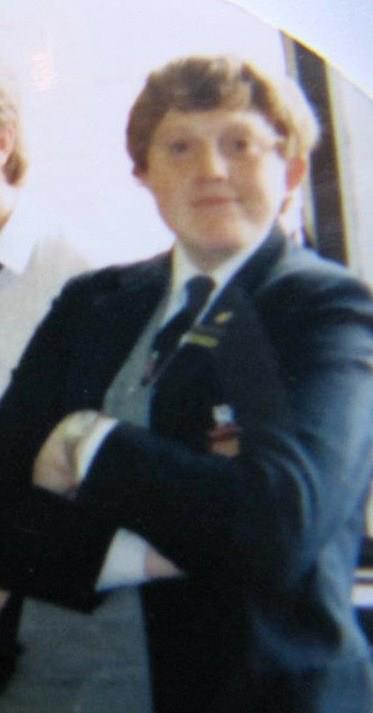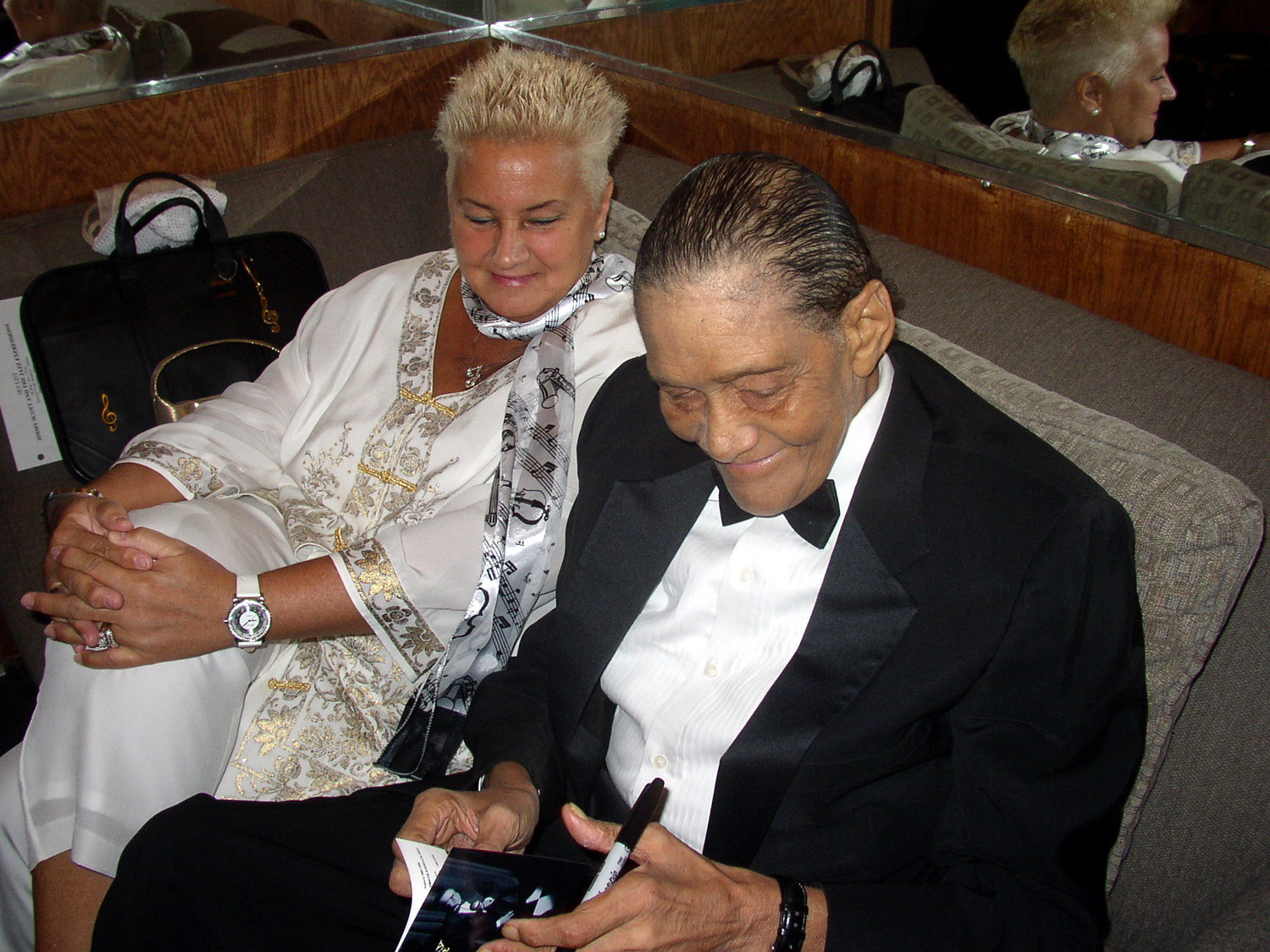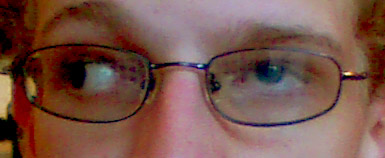|
Synkinesis
Synkinesis is a neurological symptom in which a voluntary muscle movement causes the simultaneous involuntary contraction of other muscles. An example might be smiling inducing an involuntary contraction of the eye muscles, causing a person to squint when smiling. Facial and extraocular muscles are affected most often; in rare cases, a person's hands might perform mirror movements. Synkinesis is usually caused by dysfunction of a particular nerve. Potential causes include improper healing after nerve trauma or neurodegeneration, as occurs in Parkinson's disease. In congenital cases, mutations of genes involved in nerve growth, specifically axonal growth have been found. Rarely, it occurs as part of syndromes with neuroendocrine problems, such as Kallman syndrome. The prognosis is usually good with normal intelligence and lifespan. Treatment depends on the cause, but is largely conservative with facial retraining or mime therapy, if needed, while Botox and surgery are used as last r ... [...More Info...] [...Related Items...] OR: [Wikipedia] [Google] [Baidu] |
Marcus Gunn Phenomenon
Marcus Gunn phenomenon is an autosomal dominant condition with incomplete penetrance, in which nursing infants will have rhythmic upward jerking of their upper eyelid. This condition is characterized as a synkinesis: when two or more muscles that are independently innervated have either simultaneous or coordinated movements. Common physiologic examples of synkineses occur during sucking, chewing, or conjugate eye movements. There are also several abnormal cranial nerve synkineses, both acquired and congenital. Marcus Gunn jaw-winking is an example of a pathologic congenital synkinesis. First described by the ophthalmologist Marcus Gunn in 1883,Gunn RM. Congenital ptosis with peculiar associated movements of the affected lid. Trans Ophthal Soc UK. 1883;3:283-7. this condition presents in approximately 5% of neonates with congenital ptosis. This condition has been associated with amblyopia (in 54% of cases), anisometropia (26%), and strabismus (56%). Presentation Behavioral and ... [...More Info...] [...Related Items...] OR: [Wikipedia] [Google] [Baidu] |
Bell's Palsy
Bell's palsy is a type of facial paralysis that results in a temporary inability to control the facial muscles on the affected side of the face. In most cases, the weakness is temporary and significantly improves over weeks. Symptoms can vary from mild to severe. They may include muscle twitching, weakness, or total loss of the ability to move one or, in rare cases, both sides of the face. Other symptoms include drooping of the eyelid, a change in taste, and pain around the ear. Typically symptoms come on over 48 hours. Bell's palsy can trigger an increased sensitivity to sound known as hyperacusis. The cause of Bell's palsy is unknown and it can occur in any age. Risk factors include diabetes, a recent upper respiratory tract infection, and pregnancy. It results from a dysfunction of cranial nerve VII (the facial nerve). Many believe that this is due to a viral infection that results in swelling. Diagnosis is based on a person's appearance and ruling out other possible causes. ... [...More Info...] [...Related Items...] OR: [Wikipedia] [Google] [Baidu] |
Kallmann Syndrome
Kallmann syndrome (KS) is a genetic disorder that prevents a person from starting or fully completing puberty. Kallmann syndrome is a form of a group of conditions termed hypogonadotropic hypogonadism. To distinguish it from other forms of hypogonadotropic hypogonadism, Kallmann syndrome has the additional symptom of a total lack of sense of smell (anosmia) or a reduced sense of smell. If left untreated, people will have poorly defined secondary sexual characteristics, show signs of hypogonadism, almost invariably are infertile and are at increased risk of developing osteoporosis. A range of other physical symptoms affecting the face, hands and skeletal system can also occur. The underlying cause is a failure in the correct production or activity of gonadotropin-releasing hormone by the hypothalamus. This results in low levels of the sex hormones testosterone in males or oestrogen and progesterone in females. Diagnosis normally occurs during teenage years when puberty fails ... [...More Info...] [...Related Items...] OR: [Wikipedia] [Google] [Baidu] |
Kallman Syndrome
Kallmann syndrome (KS) is a genetic disorder that prevents a person from starting or fully completing puberty. Kallmann syndrome is a form of a group of conditions termed hypogonadotropic hypogonadism. To distinguish it from other forms of hypogonadotropic hypogonadism, Kallmann syndrome has the additional symptom of a total lack of sense of smell (anosmia) or a reduced sense of smell. If left untreated, people will have poorly defined secondary sexual characteristics, show signs of hypogonadism, almost invariably are infertile and are at increased risk of developing osteoporosis. A range of other physical symptoms affecting the face, hands and skeletal system can also occur. The underlying cause is a failure in the correct production or activity of gonadotropin-releasing hormone by the hypothalamus. This results in low levels of the sex hormones testosterone in males or oestrogen and progesterone in females. Diagnosis normally occurs during teenage years when puberty fails ... [...More Info...] [...Related Items...] OR: [Wikipedia] [Google] [Baidu] |
Duane Syndrome
Duane syndrome is a congenital rare type of strabismus most commonly characterized by the inability of the eye to move outward. The syndrome was first described by ophthalmologists Jakob Stilling (1887) and Siegmund Türk (1896), and subsequently named after Alexander Duane, who discussed the disorder in more detail in 1905. Other names for this condition include: Duane's retraction syndrome, eye retraction syndrome, retraction syndrome, congenital retraction syndrome and Stilling-Türk-Duane syndrome. Presentation The characteristic features of the syndrome are: *Limitation of abduction (outward movement) of the affected eye. *Less marked limitation of adduction (inward movement) of the same eye. *Retraction of the eyeball into the socket on adduction, with associated narrowing of the palpebral fissure (eye closing). *Widening of the palpebral fissure on attempted abduction. (N. B. Mein and Trimble point out that this is "probably of no significance" as the phenomenon also occu ... [...More Info...] [...Related Items...] OR: [Wikipedia] [Google] [Baidu] |
Netrin 1
Netrin-1 is a protein that in humans is encoded by the ''NTN1'' gene. Netrin is included in a family of laminin-related secreted proteins. The function of this gene has not yet been defined; however, netrin is thought to be involved in axon guidance and cell migration during development. Mutations and loss of expression of netrin suggest that variation in netrin may be involved in cancer development. Interactions NTN1 has been shown to interact with Deleted in Colorectal Cancer Netrin receptor DCC, also known as DCC, or colorectal cancer suppressor is a protein which in humans is encoded by the ''DCC'' gene. DCC has long been implicated in colorectal cancer and its previous name was ''Deleted in colorectal carcinoma''. .... References Further reading * * * * * * * * * * * * * * * * Varadarajan, Supraja G., et al. "Netrin1 produced by neural progenitors, not floor plate cells, is required for axon guidance in the spinal cord." Neuron 94.4 (2017): 790-799. https://doi.or ... [...More Info...] [...Related Items...] OR: [Wikipedia] [Google] [Baidu] |
RAD51
DNA repair protein RAD51 homolog 1 is a protein encoded by the gene ''RAD51''. The enzyme encoded by this gene is a member of the RAD51 protein family which assists in repair of DNA double strand breaks. RAD51 family members are homologous to the bacterial RecA, Archaeal RadA and yeast Rad51. The protein is highly conserved in most eukaryotes, from yeast to humans. Variants Two alternatively spliced transcript variants of this gene, which encode distinct proteins, have been reported. Transcript variants utilizing alternative polyA signals exist. Family In mammals, seven recA-like genes have been identified: Rad51, Rad51L1/B, Rad51L2/C, Rad51L3/D, XRCC2, XRCC3, and DMC1/Lim15. All of these proteins, with the exception of meiosis-specific DMC1, are essential for development in mammals. Rad51 is a member of thRecA-like NTPases Function In humans, RAD51 is a 339-amino acid protein that plays a major role in homologous recombination of DNA during double strand break r ... [...More Info...] [...Related Items...] OR: [Wikipedia] [Google] [Baidu] |
DCC (gene)
Netrin receptor DCC, also known as DCC, or colorectal cancer suppressor is a protein which in humans is encoded by the ''DCC'' gene. DCC has long been implicated in colorectal cancer and its previous name was ''Deleted in colorectal carcinoma''. Netrin receptor DCC is a single transmembrane receptor. Since it was first discovered in a colorectal cancer study in 1990, ''DCC'' has been the focus of a significant amount of research. ''DCC'' held a controversial place as a tumour suppressor gene for many years, and is well known as an axon guidance receptor that responds to netrin-1. More recently DCC has been characterized as a dependence receptor, and many hypotheses have been put forward that have revived interest in ''DCCs candidacy as a tumour suppressor gene, as it may be a ligand-dependent suppressor that is frequently epigenetically silenced. Background Early studies of colorectal tumours found that allelic deletions of segments of chromosome 18q occur in a very high perce ... [...More Info...] [...Related Items...] OR: [Wikipedia] [Google] [Baidu] |
Muscles Of Mastication
There are four classical muscles of mastication. During mastication, three muscles of mastication (''musculi masticatorii'') are responsible for adduction of the jaw, and one (the lateral pterygoid) helps to abduct it. All four move the jaw laterally. Other muscles, usually associated with the hyoid, such as the mylohyoid muscle, are responsible for opening the jaw in addition to the lateral pterygoid. Structure The muscles are: * The masseter (composed of the superficial and deep head) * The temporalis (the sphenomandibularis is considered a part of the temporalis by some sources, and a distinct muscle by others) * The medial pterygoid * The lateral pterygoid In humans, the mandible, or lower jaw, is connected to the temporal bone of the skull via the temporomandibular joint. This is an extremely complex joint which permits movement in all planes. The muscles of mastication originate on the skull and insert into the mandible, thereby allowing for jaw movements during contr ... [...More Info...] [...Related Items...] OR: [Wikipedia] [Google] [Baidu] |
Adduction
Motion, the process of movement, is described using specific anatomical terms. Motion includes movement of organs, joints, limbs, and specific sections of the body. The terminology used describes this motion according to its direction relative to the anatomical position of the body parts involved. Anatomists and others use a unified set of terms to describe most of the movements, although other, more specialized terms are necessary for describing unique movements such as those of the hands, feet, and eyes. In general, motion is classified according to the anatomical plane it occurs in. ''Flexion'' and ''extension'' are examples of ''angular'' motions, in which two axes of a joint are brought closer together or moved further apart. ''Rotational'' motion may occur at other joints, for example the shoulder, and are described as ''internal'' or ''external''. Other terms, such as ''elevation'' and ''depression'', describe movement above or below the horizontal plane. Many anatomic ... [...More Info...] [...Related Items...] OR: [Wikipedia] [Google] [Baidu] |
Abduction (physiology)
Motion, the process of movement, is described using specific anatomical terms. Motion includes movement of organs, joints, limbs, and specific sections of the body. The terminology used describes this motion according to its direction relative to the anatomical position of the body parts involved. Anatomists and others use a unified set of terms to describe most of the movements, although other, more specialized terms are necessary for describing unique movements such as those of the hands, feet, and eyes. In general, motion is classified according to the anatomical plane it occurs in. ''Flexion'' and ''extension'' are examples of ''angular'' motions, in which two axes of a joint are brought closer together or moved further apart. ''Rotational'' motion may occur at other joints, for example the shoulder, and are described as ''internal'' or ''external''. Other terms, such as ''elevation'' and ''depression'', describe movement above or below the horizontal plane. Many anatomic ... [...More Info...] [...Related Items...] OR: [Wikipedia] [Google] [Baidu] |





